You can remove the "Edit in Notepad" context menu item from Windows 11 File Explorer. The command is new to Windows 11 23H2, and appears once you update the Notepad app to version 11.2311.33.0.
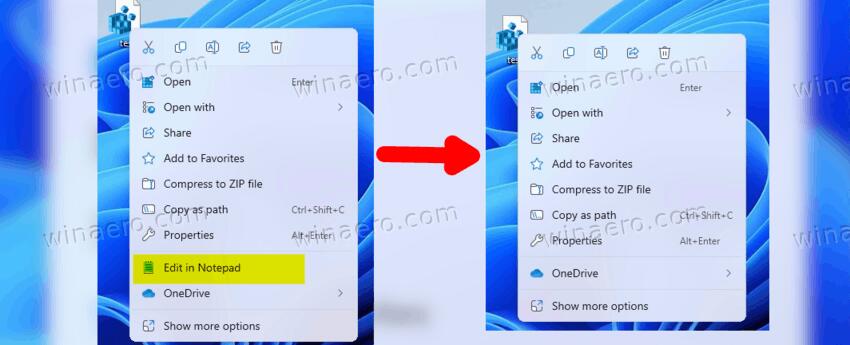
The Notepad, an app that has been a part of every version of Microsoft Windows since Windows 1.0 in 1985, is a classic choice for users who occasionally need to perform simple text editing tasks. While it hadn't seen significant changes or advanced features until Windows 11, the latest version now offers a host of enhancements such as tab support, an extended undo history, a dark theme, and the ability to automatically save documents. Interestingly, it has also transitioned into a Store app.
Advertisеment
Furthermore, Microsoft has future plans to integrate AI capabilities into the modern Notepad, enabling it to rewrite and summarize texts for you.
Undoubtedly, the Windows 11 app comes with its fair share of advantages. For instance, it features a Dark theme, allowing for a more visually comfortable experience. Additionally, it automatically saves your session, meaning that all your documents reopen exactly where you left off, even if you didn't save them individually!
The new app adds itself to the File Explorer context menu. When you right-click any file, you will see the Edit in Notepad entry. It appears in both shorten and full menus, and has the Notepad icon. If don't use Notepad as your primary plain text editor, you may want to remove the redundant item.
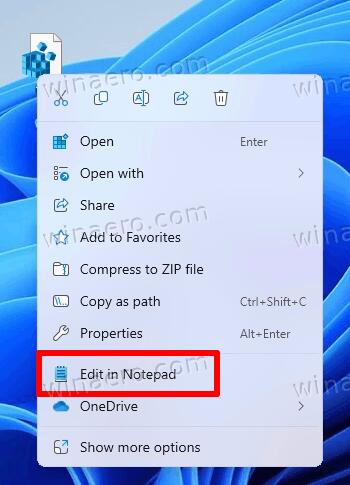
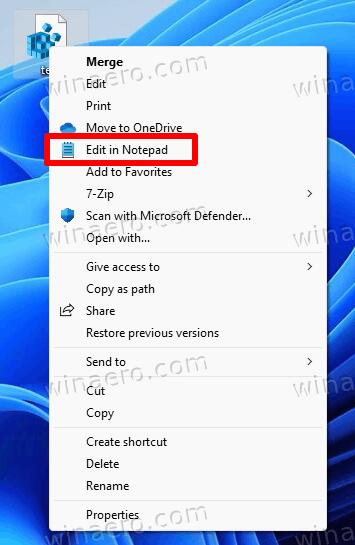
To delete the "Edit in Notepad" item in the context menu, follow the instructions below.
Remove Edit in Notepad From Context Menu
- Open the Registry Editor by typing regedit in the Start menu or search.
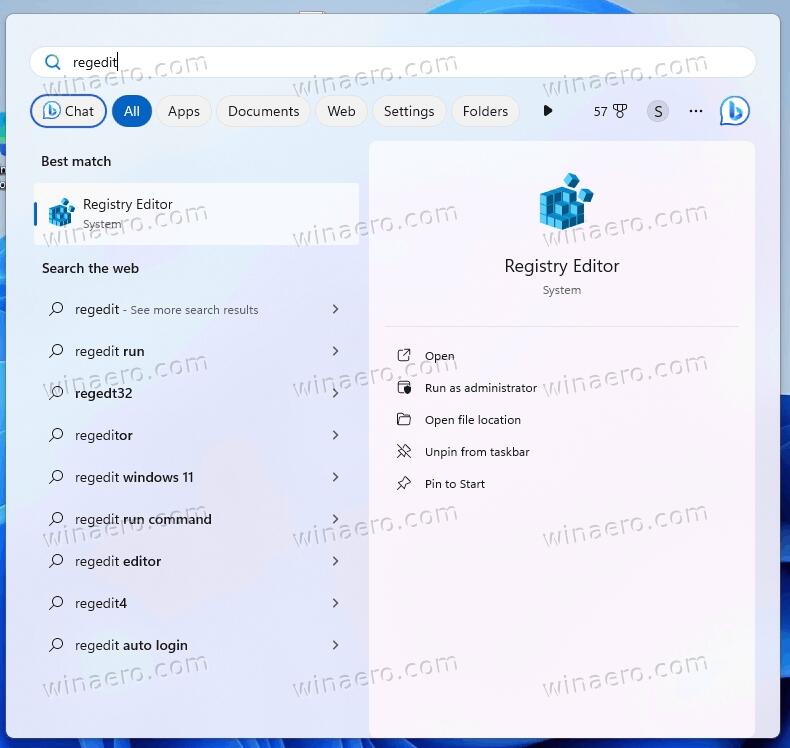
- In the regedit app, navigate to the HKEY_CURRENT_USER\Software\Microsoft\Windows\CurrentVersion\Shell Extensions key. You can quickly go to this key by pasting its path in the address bar.
- On the left, right-click the Shell Extensions key, and select New > Key. Name the new subkey Blocked.
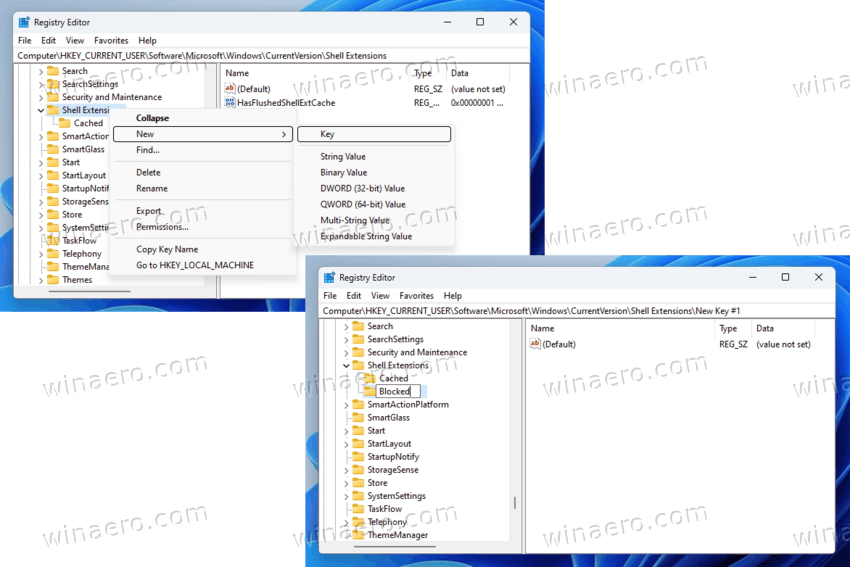
- Now right-click the Blocked and select New > String Value.
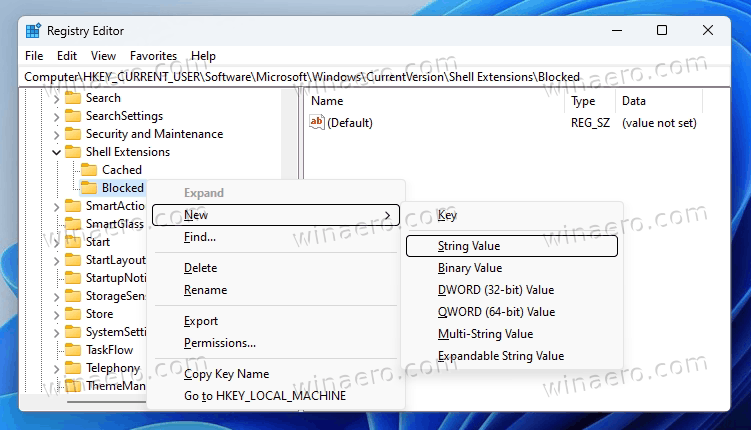
- Name the new value {CA6CC9F1-867A-481E-951E-A28C5E4F01EA}, and leave its data empty.
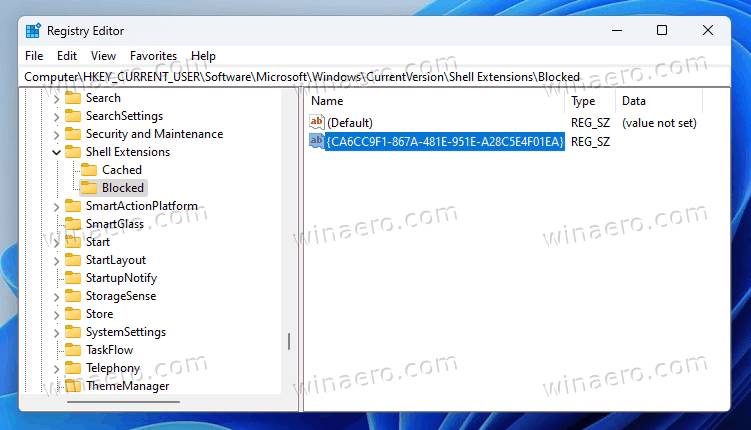
- To apply the change, click your user icon in the Start menu, and select Sign out. Alternatively, you can restart your computer.
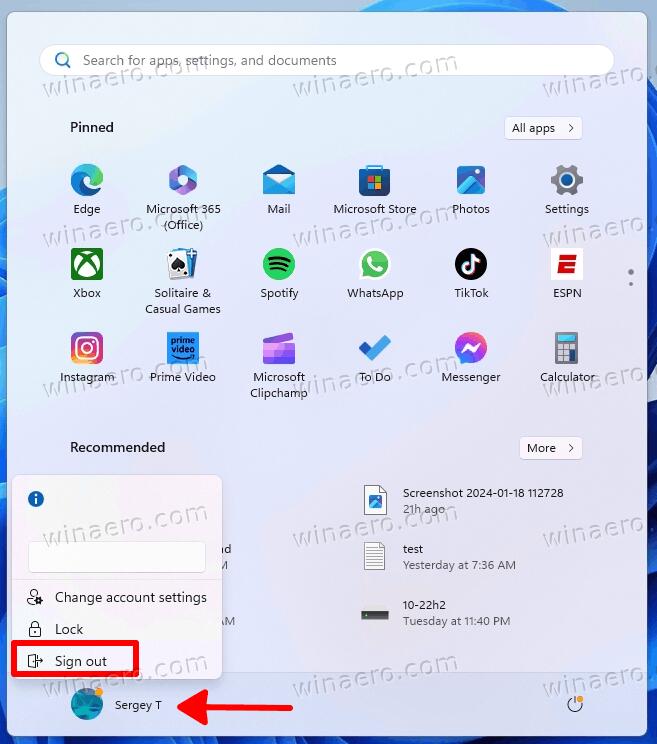
You are done. Now, if you right-click a file, you won't see the "Edit in Notepad" command in the menu.
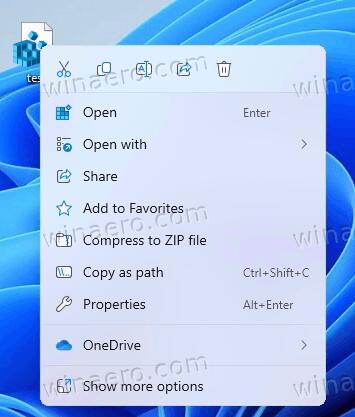
To save your time, I have created a couple of REG files that automate the tweak. You will find them in the last chapter of this post.
It is worth noting that the above reviewed Registry tweak hides the Notepad entry only for the current user. You may want to delete it for all users.
The method doesn't differ much. You just need to do the same steps under a different Registry key.
Remove the "Edit in Notepad" Item for All Users
- Open the regedit app: Press Win + R, type
regedit, and then press Enter. - Navigate to the HKEY_LOCAL_MACHINE\SOFTWARE\Microsoft\Windows\CurrentVersion\Shell Extensions registry branch.
- Right-click the Shell Extensions key in the left pane, and select New > Key from the menu to create a new subkey. Name it Blocked.
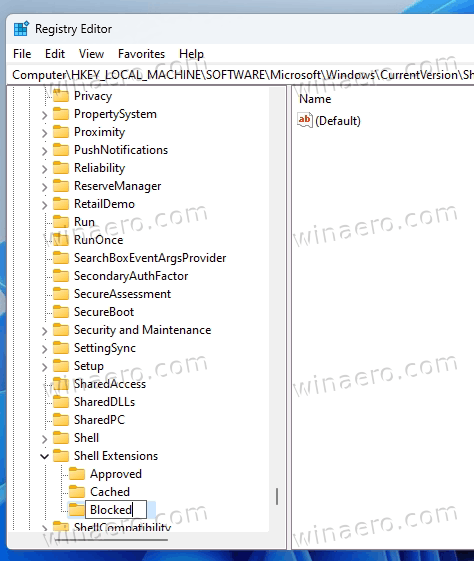
- To the right of the Blocked key (in the right pane) create a new string value named {CA6CC9F1-867A-481E-951E-A28C5E4F01EA} with an empty data.
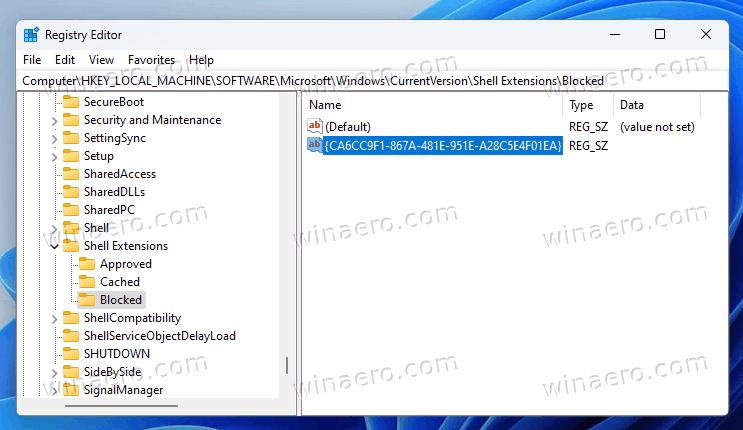
- Restart the computer for the changes to take effect.
Done! From now the context menu command is not visible for anyone using your PC.
Finally, you will probably want to automate these Registry modifications. Here's how.
Automating the Registry tweaks
To avoid manual Registry editing, you can download ready-to-use REG files. You can get them here.
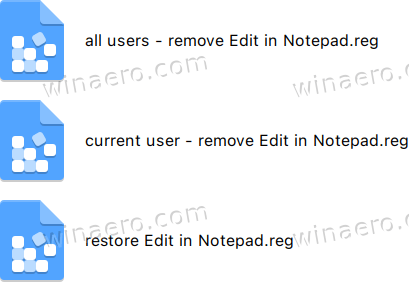
Extract the downloaded archive, and use one of these files.
-
all users - remove Edit in Notepad.reg- removes the entry for all user accounts. -
current user - remove Edit in Notepad.reg- removes the item for the current user only. -
restore Edit in Notepad.reg- adds the context menu command back.
Additionally, here are the console commands that do the same in the command prompt. They are useful for batch files, logon scripts and similar scenarios.
The removal for current user
reg add "HKCU\Software\Microsoft\Windows\CurrentVersion\Shell Extensions\Blocked" /v "{CA6CC9F1-867A-481E-951E-A28C5E4F01EA}" /d "" /t REG_SZ /f

This command will successfully run with limited permissions with current user's privileges. But you must run the two commands below as Administrator.
Delete the item for all users
reg add "HKLM\Software\Microsoft\Windows\CurrentVersion\Shell Extensions\Blocked" /v "{CA6CC9F1-867A-481E-951E-A28C5E4F01EA}" /d "" /t REG_SZ /f
Restore defaults
Finally, to restore defaults, you need to run these two commands
reg delete "HKCU\Software\Microsoft\Windows\CurrentVersion\Shell Extensions\Blocked" /v "{CA6CC9F1-867A-481E-951E-A28C5E4F01EA}" /f
reg delete "HKLM\Software\Microsoft\Windows\CurrentVersion\Shell Extensions\Blocked" /v "{CA6CC9F1-867A-481E-951E-A28C5E4F01EA}" /f
That's it.
Support us
Winaero greatly relies on your support. You can help the site keep bringing you interesting and useful content and software by using these options:
